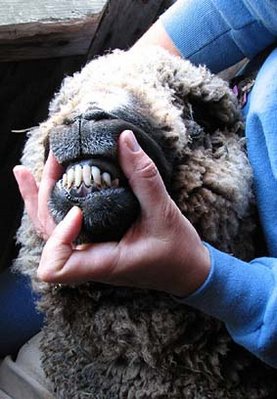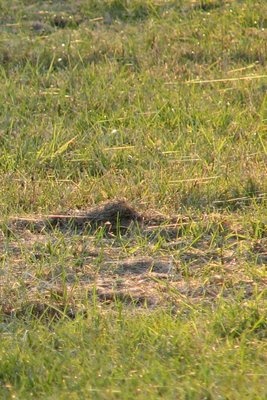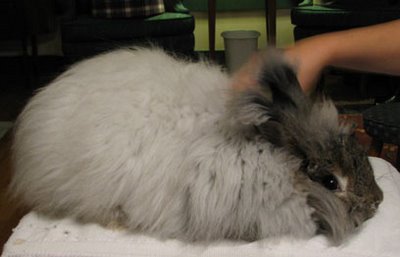Sheep care
 First, we trim their hooves. A sheep’s hooves are rather like fingernails and continue to grow unless worn down or broken off. I suppose that where sheep originated – somewhere in Asia – the land was rocky and their hooves wore down, but this doesn’t happen in Kentucky meadows so the hooves grow too long and cause problems.
First, we trim their hooves. A sheep’s hooves are rather like fingernails and continue to grow unless worn down or broken off. I suppose that where sheep originated – somewhere in Asia – the land was rocky and their hooves wore down, but this doesn’t happen in Kentucky meadows so the hooves grow too long and cause problems.Next, we change their coats. Each spring we shear the sheep and put coats on them to protect their wool from dirt and sun bleaching. The sheep’s wool grows during the year the coats get tight, so we switch to larger coats. We can’t simply put larger coats on them in the spring because the sheep would “step out” of them.
Finally we give each sheep worming medicine and a general look over to make sure they are healthy. One way to tell health (as well as get an idea about its age) is to look at its teeth. This sheep – Josephine – is about eight and her clean teeth show that she is healthy.




